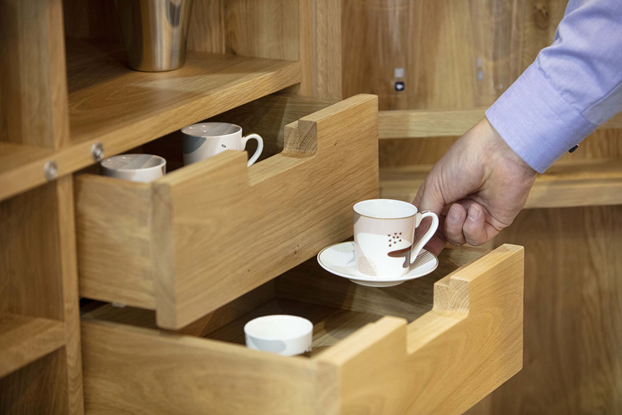Trends in the furniture industry

The furniture industry is part of the Cultural and Creative EU Industrial Ecosystem. The tradition is being mixed here - craftsmanship and innovations in production (digitalisation, robotisation).

Trends in the furniture industry can be perceived from two perspectives - from the perspective of furniture production and the product itself. These perspectives mix and influence each other.
The first trend is using virtual reality (VR) in design. More and more often, a customer can create, under the supervision of an experienced salesperson, their unique personalised furniture based on their wish in their own space. Designing individual furnishing elements' shape, colour, and dimensions is possible. By linking the software, the entire design can be sent for production.
This is connected to another trend - the furniture is not made for the warehouse but is made as a custom production. The software converts the designed furniture into production parts, including construction details. The instructions for the individual CNC machines are entirely automatic. Each piece has a barcode that has instructions for shape and design processing hidden in it. With the help of the readers, the employees of the furniture companies know the complete information about a given part. In some companies, the customer can monitor the progress of the furniture throughout the production process and possibly change the parameters if the technology still allows it.
Robotisation is trending as well. The collaborative robot can daily work well for 24 hours. It partly replaces the missing workforce. It is necessary to program the robot well.
3D printing can also be used, but only for prototyping or producing more demanding spatial parts, mainly for making outdoor furniture.
New materials are being developed, especially towards to ecological aspect. Materials are being pressed from paper, coffee grounds, denim and other recyclable materials. Natural materials are used to produce new materials - flax stalks, hemp stalks, dry leaves, cactus,...
The furniture is individualised and personalised, usually made to the customer´s specifications and wishes. Digital flatbed printing is used both on wallpaper and upholstery fabrics and on the surface of large-scale materials for furniture production. The design is customised according to the customer's wishes. Basically, anything can be printed.
The new trend is to bring more colour into the interior, as opposed to previous years when white was the predominant colour. For each year, a colour trend of the year is announced. The new black has become brown!
In small flats, multifunctional elements are used to make the most of the space - folding beds, tables, and storage spaces that change their function by simple manipulation. Design is not only about appearance but also about function, and various elements of technology (chargers, heart rate monitors, mattresses with breath and sweat monitoring, etc.) are now often incorporated into furniture. The concept of "smart furniture" is definitely a big trend from a product perspective.
Sustainability is also a big issue. Recycling and upcycling are seen more as a hobby than a business. Even if an old item is used, from an environmental perspective, this conversion requires a lot of energy costs, water consumption, paint, and time. In high volume production, this trend is unfeasible.
Furniture makers see sustainability more in the use of local resources, quality production and timeless design.
In the discussion, we could hear that many trends are common in other industries, f.e. in automotive.
Mrs Lucia Haraslinova, Chairwoman, Cluster of Czech Furniture Manufacturers
Presentation
|
Created: 10/05/2023 12:45:11
|
|
Created: 10/05/2023 12:45:12
|